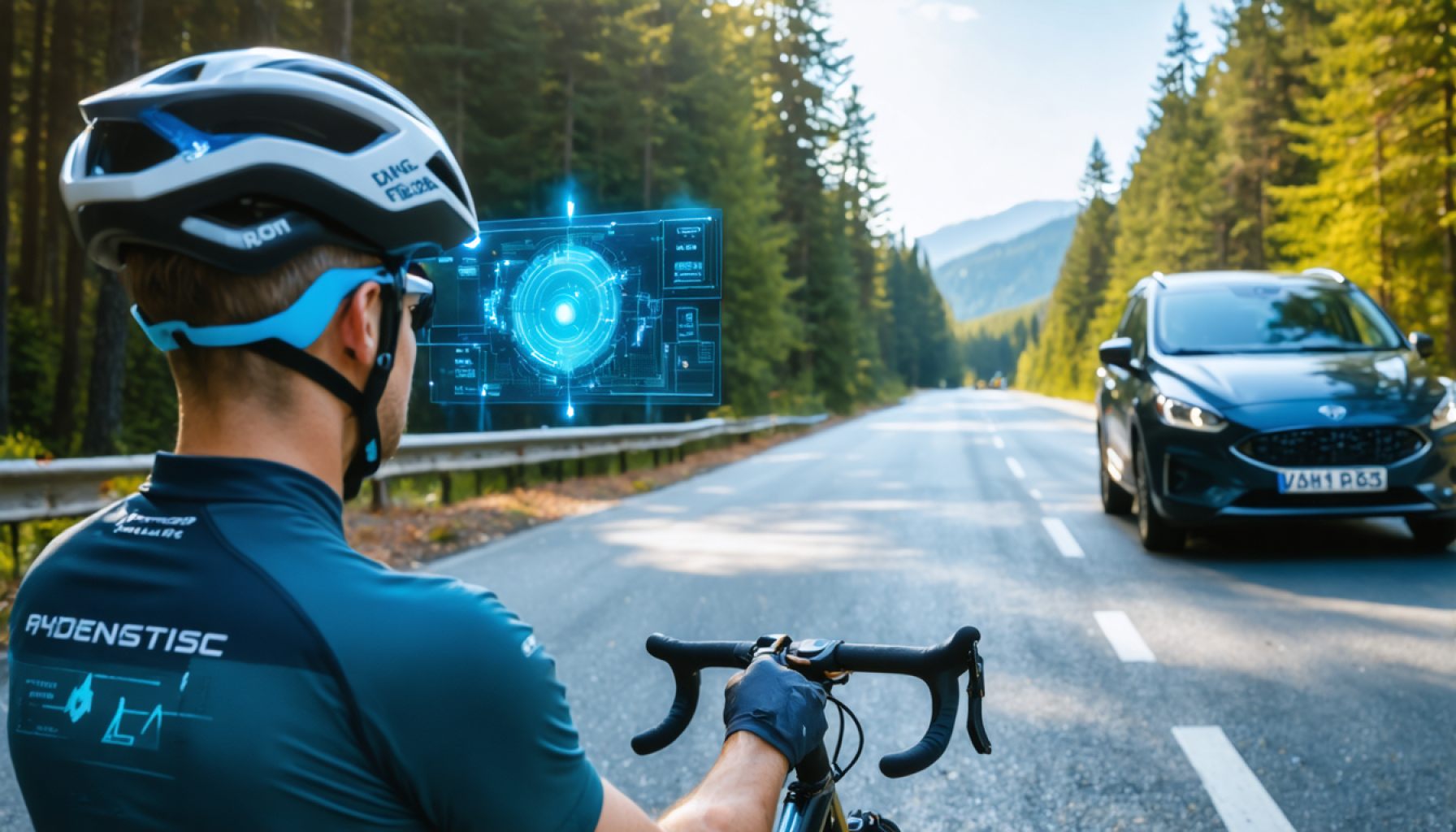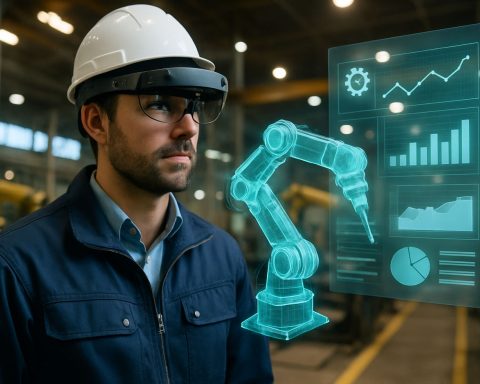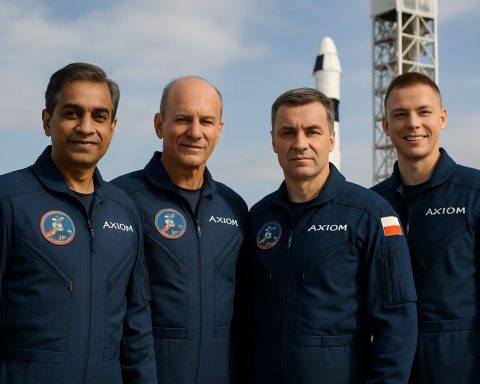- CycleARcade, a groundbreaking platform from the University of Glasgow, uses augmented reality (AR) to enhance safety between cyclists and autonomous vehicles (AVs).
- AR headsets help cyclists visualize nearby AVs, transforming road safety into an interactive experience.
- The initiative seeks to create a “shared language” for effective communication between cyclists and AVs, similar to human drivers’ non-verbal cues.
- An immersive study with 20 cyclists evaluated interface designs, with RoadAlert emerging as the most effective in alerting cyclists to potential risks.
- Research into cyclist behavior in Sweden, Oman, and Scotland highlights how regional road practices impact interactions with AVs.
- Findings emphasize the need for innovation in road safety to incorporate empathy and adaptability alongside technology.
- Results will be showcased at the upcoming CHI Conference, focusing on the AR-driven language of road safety.
Cyclists and autonomous vehicles (AVs) are cohabiting on an ever-evolving highway of technological advancement. A pioneering platform, aptly named CycleARcade, has emerged from Scotland’s prestigious University of Glasgow, positioning itself at the vanguard of safety solutions for this new road dynamic. The university’s groundbreaking initiative uses augmented reality (AR) to bridge the communication gap between cyclists and AVs, ensuring both coexist safely.
Picture this: cyclists gliding through city streets, supported by AR headsets that project a virtual dance of autonomous cars around them. This is not a fantasy but a reality brought to life through CycleARcade. This innovative tool allows cyclists to engage with simulated AVs against the backdrop of their actual environment, morphing road safety into an interactive experience. It’s a leap towards a seamless dialogue between two-wheeled commuters and driverless cars.
At the heart of this endeavor is a vital question: How can cyclists and autonomous vehicles communicate effectively? Professor Stephen Brewster, a key figure in this research initiative, underscores the need for a shared language—akin to the silent entendres human drivers use to negotiate their way through traffic. Without it, the trust that cyclists presently extend to human drivers could be compromised in an AV-dominated future.
CycleARcade’s first exploratory journey tested various interface designs aimed at forewarning cyclists of nearby AVs. In an immersive study, twenty cyclists explored three distinct virtual displays: RoadAlert, rearview, and Gem. RoadAlert emerged as the frontrunner, providing focused alerts on potential risks and equipping cyclists with the foresight necessary to navigate AV-populated landscapes.
Beyond examining interface designs, researchers ventured into a comparative study of cyclist behavior across Sweden, Oman, and Scotland—three countries with varied cycling infrastructures. The study unveiled that the culture and road practices unique to each nation heavily influence cyclists’ interactions with AVs. This revelation could steer the adaptation of AV communication systems to suit regional road norms, ensuring the harmonious blending of tech and tradition on global roads.
CycleARcade’s advancements highlight an imperative lesson: innovations in road safety must transcend technological prowess by embedding empathy and adaptability into their core. Cycling is not just about pedaling—it’s about engaging with an environment that respects and enhances the safety of all road users.
The research community eagerly anticipates the presentation of these insightful studies at the upcoming CHI Conference in Yokohama, Japan, where the world will tune in to hear about the possibilities of this new AR-driven language of road safety. As autonomous vehicles become more prevalent, such innovation reminds us that technology’s ultimate goal is not just efficiency but cohesion and safety in our shared world.
CycleARcade: Revolutionizing Safety for Cyclists and Autonomous Vehicles
Understanding CycleARcade’s Innovation
The intersection of cyclists and autonomous vehicles (AVs) on modern roads poses unique challenges and opportunities. The CycleARcade platform, developed by the University of Glasgow, leverages augmented reality (AR) to foster a safe coexistence between cyclists and AVs. AR headsets used in CycleARcade project simulated AVs into the real world, granting cyclists the ability to visualize traffic dynamics in real-time.
Exploring AR-Enhanced Cycling Experiences
CycleARcade transforms typical cycling into an augmented experience where cyclists can interact dynamically with their environment. This immersive approach aims to create a “shared language” between cyclists and AVs, in the words of Professor Stephen Brewster, which is crucial for maintaining the implicit communication traditionally shared with human drivers. This is akin to understanding subtle gestures or eye contact used in daily driving interactions.
Global Insights from CycleARcade Studies
The platform not only tests AR interfaces like RoadAlert but also investigates how cultural contexts influence the interaction between cyclists and AVs. For example, the behavior study conducted in Sweden, Oman, and Scotland reflects how differing road infrastructures and cycling cultures impact safety and interactions on the road. Such insights can inform the design of AV systems that respect regional uniqueness and accommodate local norms.
The Role of Empathy in Tech Innovations
CycleARcade underscores the importance of empathy in technology development. By accounting for the diverse behaviors and needs of cyclists, such innovations move beyond technological advancement towards fostering community, safety, and inclusivity. This mindset aligns with the requirements of effective urban planning and policy-making in creating harmonious transportation ecosystems.
Impactful Recommendations and Quick Tips
1. For Cyclists:
– Consider using AR-enabled devices to improve situational awareness.
– Stay informed about AV technology and its communication signals.
2. For Urban Planners:
– Integrate AR-based safety systems in city planning to enhance cyclist safety.
– Encourage collaborations between tech developers and local communities to ensure context-appropriate applications.
3. For Developers:
– Focus on adaptable technologies that cater to a global audience with local customization options.
– Embrace continuous user feedback to refine safety solutions.
Future Trends and Industry Impact
The integration of AR in road safety, as exemplified by CycleARcade, is expected to set a precedent for future tech-driven urban solutions. As AV technology continues to evolve, platforms like CycleARcade emphasize the increasing importance of human-centric design in tech development.
Conclusion
Enhancing cyclist safety through AR and AV communication is a promising frontier in modern transportation. By prioritizing user needs and cultural sensitivity in technological designs, CycleARcade demonstrates a pathway to achieve safer road environments. For more information on the intersection of technology and safety practices, explore University of Glasgow.
Ultimately, the key to successful implementation lies in balancing technological capability with the empathetic design, ensuring an inclusive and future-proof transportation ecosystem.







